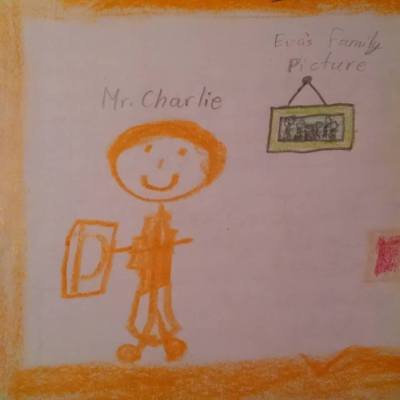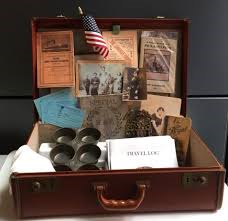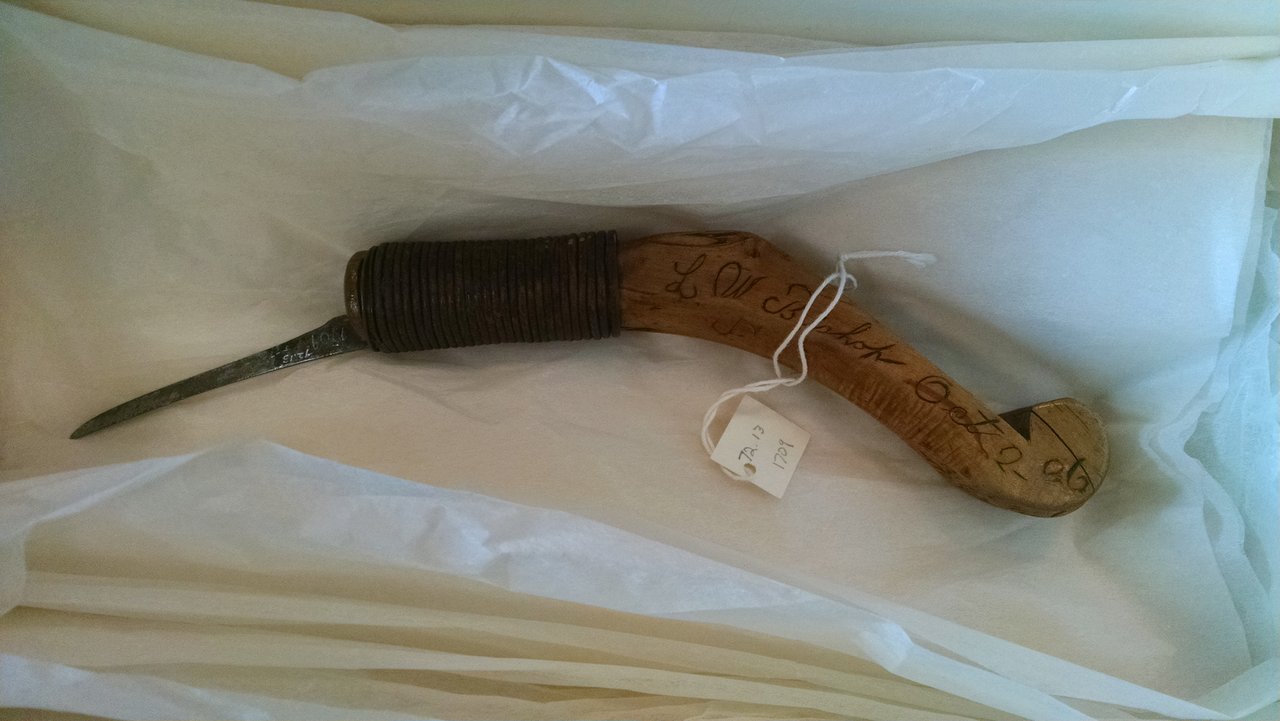Hello, Steemit! As you can guess from my username, my name is Charlie Hersh, and I'm working towards my Master's in Public History at Temple University. I typically blog about school on my wordpress blog, so I'm excited to explore this new platform! I also work as the Education Coordinator at the National Museum of American Jewish History (NMAJH), where I help bring over 11,000 school children to the museum each year.

A portrait of me visiting a school to teach about artifacts,
courtesy of a 6th grader at Francis Scott Key Elementary.
Both in school and at work, I focus on cultural and religious history, and especially how that intersects with immigration history. In the field of public history, we acknowledge that everyone approaches a particular narrative or artifact from their own personal standpoint and collection of experiences, and talking about culture, religion, and immigration with museum visitors really highlights this. Especially with the students who visit NMAJH. The majority of them have never met a Jewish person or don't know anything about Judaism, and so through sharing our respective cultures, traditions, and family histories, we learn about each other and build cross-cultural appreciation. These experiences become invaluable in the fight against bigotry and fear!

The Traveling Suitcase, which I use
to teach students about object analysis.
In addition to these historical themes, I also engage with material culture in my work. While it's certainly easier to do research from text-based documents, using objects to learn about the past is more fun. Anyone can learn from objects — no matter how old you are, what language you speak, where you come from, anyone can have ideas about a cup or a chair. Objects are a great tool because they're often unexpected, and the surprise of learning about the past from them can make history more entertaining. And frequently objects can help us to learn about subaltern or otherwise ignored histories, for examples with communities with oral, not text-based, history traditions.[1]

I just spent the last four months seeing how much information could be learned from this object, which is a crooked knife likely from Maine, and let me tell you.... it wasn't dull!
So why am I excited about our focus on 1918? My main temporal focus is the mass wave of immigration at the turn of the 20th century, in which 23 million immigrants (including about 2 million Russian Jews) came to the United States, and 1918 comes before a major turning point that will drastically change immigration policy for the next hundred years. A major law has just been passed, which severely limits immigration from Asia and implements a literacy test and quota for those still allowed in. With America's entrance into WWI, immigrants must balance pressures to enlist to prove their patriotism with a variety of feelings towards their countries of origin, all while enduring a rapidly increasing xenophobia and nativism. All of this exacerbated by a mounting health crisis.... Any of this sound familiar?
While I'll try not to be too presentist in my posts here, I am eager to explore these issues from 1918 and see how we can apply these lessons to today. I hope you enjoy!
100% of the SBD rewards from this #philly5151 post will support the Philadelphia History initiative @phillyhistory. This crypto-experiment is part of a graduate course at Temple University's Center for Public History and is exploring history and empowering education to endow meaning. To learn more click here.
